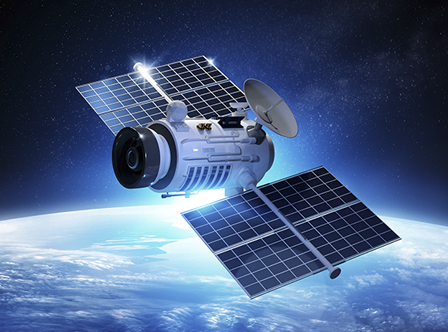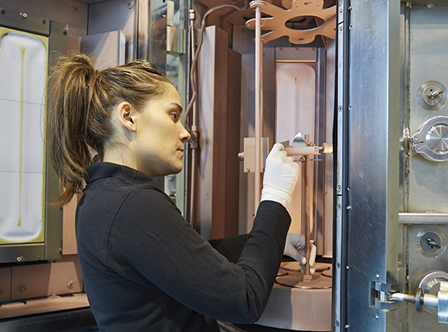NEWS


The technology centre is collaborating with SENER in the development of PVD coatings to provide additional functionalities for the surfaces of critical satellite components used in the Solar Orbiter, EXOMARS and JUICE missions.
Satellite components operating outside the terrestrial atmosphere lack the layer of oxides present in environments where there is air. The consequence of this phenomenon is that metal parts can be joined to each other when contact is established, an effect that is called “cold welding” and is very dangerous when fold-out parts such as antennas or solar panels are involved.
In order to prevent this phenomenon, SENER has asked experts in surface engineering at the IK4-TEKNIKER technology centre to develop smart coatings to prevent the cold welding of satellite components in the Solar Orbiter (SolO), EXOMARS and JUICE space missions.
Satellite mechanisms are fitted with many titanium parts that could tend to be welded together in the absence of a protective layer. To avoid this phenomenon, IK4-TEKNIKER has developed coatings to prevent metal-metal contact. These solutions have been validated by SENER and the European Space Agency (ESA).
More specifically, researchers at the technology centre have developed coatings using PVD (Physical Vapour Deposition), a technology they specialise in and which allows additional properties measuring only a few microns or nanometers in thickness to be deposited on the surface.
In this technique, a solid is evaporated in the form of atoms or molecules that are moved under conditions of vacuum to gradually condensate on the surface of the substrate until they form a thin film coating with specific physical-chemical properties. The process also makes it possible to incorporate functional characteristics on a surface in a clean and sustainable manner.
IK4-TEKNIKER, therefore, is working on coatings for satellite components developed by SENER that are susceptible to cold welding. We can find some examples in antennas equipped with folding arms that must avoid this kind of welding to operate correctly.
Within the framework of collaborative work with SENER, IK4-TEKNIKER has provided coatings for parts used on the SolO solar observation mission scheduled to be launched next year aboard a satellite developed by ESA to measure the internal heliosphere and rising solar wind for observations in the vicinity of the sun's polar regions.
The technology centre has also collaborated with SENER on both EXOMARS explorations on Mars to discover vestiges of life on the red planet.
Recently, the technology centre has also made coatings for the JUICE mission to be launched by ESA in 2022 programmed to reach Jupiter in 2030.



